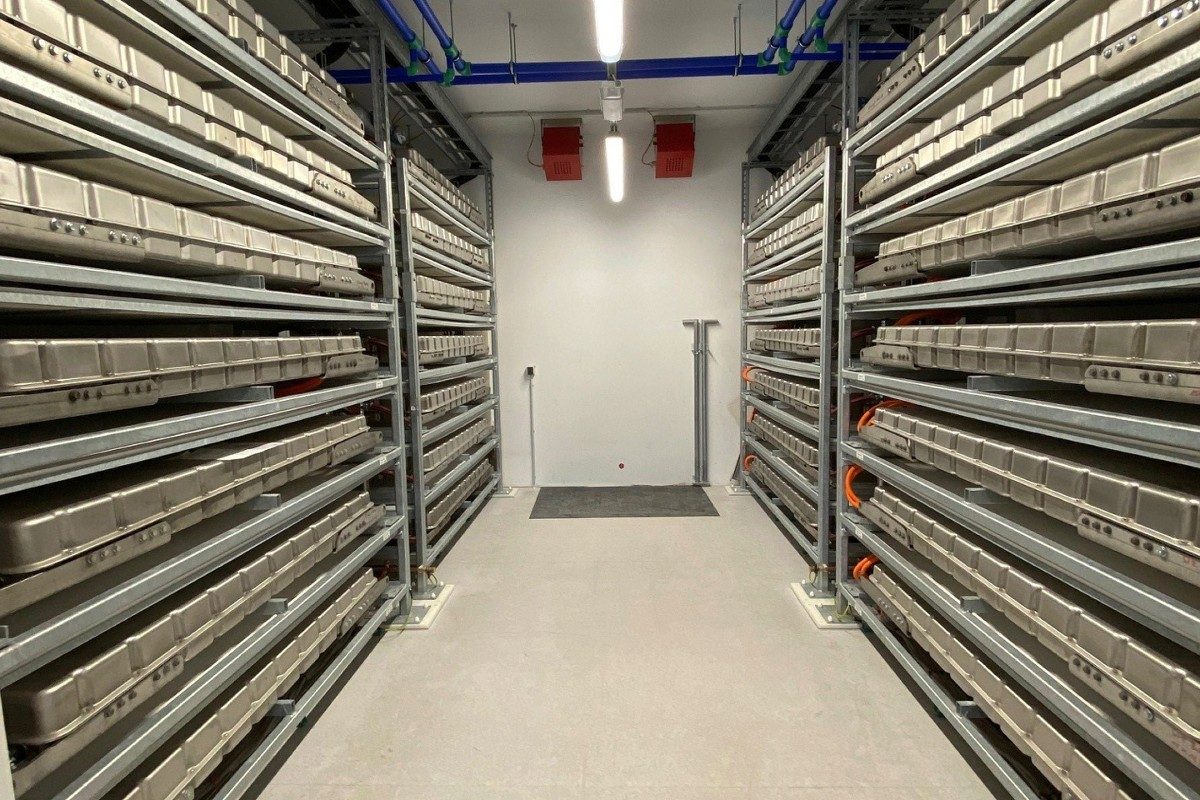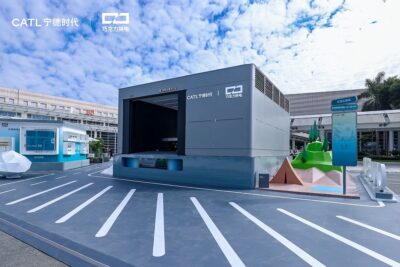Üstra launches power storage system from old eCitaro batteries into operation
The storage system in Üstra’s rectifier substation now ensures mobility in turn: it enables the parallel energy supply of the eCitaro electric buses and the light rail vehicles of the public transport company. The storage system has a total capacity of more than 500 kWh and consists of 28 second-life battery systems from the Mercedes-Benz eCitaro.
The partners are pursuing the project as part of a pilot project called GUW+ announced in 2021. In addition to consortium leader Alstom Transport Deutschland, the consortium included the companies Elpro and Motion Control and Power Electronics, the Fraunhofer IVI in Dresden and TU Dresden. Üstra AG was involved as a demonstration partner and Daimler Buses as an associated partner. Mercedes-Benz Energy GmbH, a subsidiary of Mercedes-Benz AG specializing in the development of energy storage solutions, was responsible for the development and implementation of the second-life application.
The energy storage system now serves Üstra as a buffer for using the recuperation energy generated during light rail operation. According to an accompanying press release, the stored energy makes it possible to balance load peaks and ensure smooth continued operation in the event of grid failures. “In addition, Üstra is also focusing on supplying the public charging infrastructure and feeding excess capacity into the public power grid.”
From Daimler Buses’ perspective, reusing the batteries also improves the eCitaro’s environmental footprint and reduces its life cycle costs. According to the manufacturer, the service life of the batteries with NMC technology in the eCitaro ends after around five to six years with a capacity of around 80 per cent. After that, the necessary range of the city buses is no longer guaranteed. In stationary operation, however, where capacity losses only play a minor role, the batteries are still fully operational for up to ten years, according to Daimler Buses.
“The batteries in Üstra’s stationary battery storage pilot project currently still come from eCitaro city buses used by Daimler Buses to conduct test drives of thousands of kilometers. In the future, the stationary energy storage unit can be expanded with batteries swapped out from the 49 all-electric eCitaro rigid and articulated buses currently run by Üstra,” the Stuttgart-based company wrote. Their 490 batteries are expected to be gradually integrated into the second-life storage solution from 2026. “This would enable Üstra to completely cover its energy needs with its own batteries in stationary second-life operation, thus boosting its profitability,” writes Daimler Buses.
The result of the GUW+ project is that the Hanover example is suitable as a basis for the further development of the concept and future implementation as an economically efficient series solution. “The stationary storage solution of this pilot project is not only regenerative and configurable, it can also be adapted as necessary for other applications and scaled accordingly,” concludes the conclusion. The aim is, for example, a container solution that is not dependent on existing premises on the company premises and can instead be flexibly integrated into different environmental conditions.
The concept also has further potential with regard to the integration of photovoltaic systems, for supplying power to other consumers or as a “spare parts store”. Daimler Buses is suggesting that new batteries for the eCitaro, which are kept in stock by Daimler Buses or by service companies and are intended for use as replacement units in the event of sudden battery failures in the vehicles, could be integrated into stationary storage systems with a low load until they are used in electric buses. “In this way, batteries can be kept in good condition until they are used on an electric bus, effectively preventing them from aging prematurely.”





0 Comments